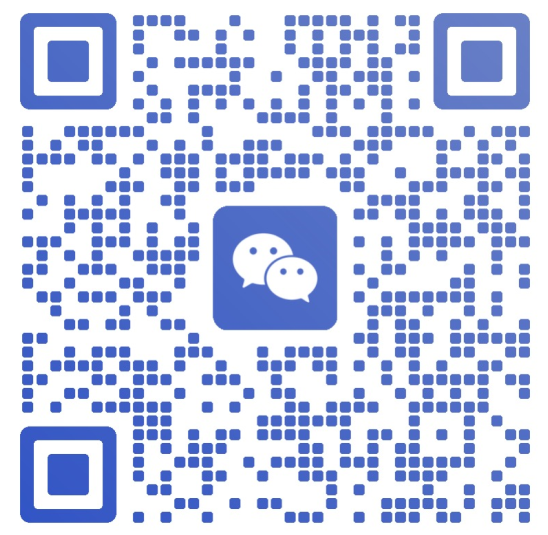If you've ever tried to log into a new Pinterest account, post a pin, or interact with other users only to see the frustrating message “Oops! We Blocked This Request,” you’re not alone. This error isn’t just a minor glitch—it can stall your Pinterest growth, whether you’re a creator building an audience, a marketer driving traffic, or a business leveraging the platform for sales. In this guide, we’ll break down what this error means, why it happens, and—most importantly—how to fix it, with a focus on advanced strategies for safely build multiple Pinterest accounts and growing your reach.
What Exactly is Pinterest's "Oops! We Blocked This Request" Error?
Pinterest’s "Oops! We Blocked This Request" is a security measure designed to protect the platform from spam, bot activity, and unauthorized access. When you see this message, Pinterest’s algorithms have flagged your request as potentially suspicious. This could range from unusual login patterns (e.g., logging in from a new device or location too quickly) to automated actions that mimic bot behavior (e.g., rapid repinning, mass following, or using third-party tools without permission).
The error isn’t permanent, but it can disrupt your workflow. For new accounts, it often acts as a "verification checkpoint"—Pinterest wants to ensure you’re a real user before granting full access. For established accounts, it might indicate a sudden change in behavior that triggers red flags (e.g., switching from casual use to aggressive marketing overnight).
Common Triggers Behind the Blocked Request
To fix the error, you first need to understand what’s causing it. Here’s a breakdown of the most frequent triggers, based on user reports and Pinterest’s security guidelines:
New accounts with missing profile details (no profile picture, empty bio, or unlinked email/phone) are more likely to be blocked as Pinterest can’t verify their legitimacy.
| Trigger | Why It Flags the Error |
|---|---|
| Shared Device or IP Address | If multiple Pinterest accounts log in from the same physical device or IP (e.g., a home Wi-Fi network), Pinterest may flag them as suspicious, assuming they’re part of a bot farm. |
| Rapid or Automated Actions | Actions like mass following, repinning 50+ pins in an hour, or using scripts to post content can trigger anti-bot algorithms. |
| Incomplete Account Setup | |
| Sudden Behavior Changes | An established account that goes from posting 1-2 pins/week to 20+ pins/day, or starts following 100+ users daily, may be seen as a spam account. |
Understanding these triggers is key—without addressing the root cause, the error will keep recurring, especially if you manage multiple Pinterest accounts for different purposes (e.g., personal, business, niche-specific projects).
Step-by-Step Fixes for the "Oops! We Blocked This Request" Error
1. Basic Troubleshooting: Rule Out Simple Issues
Start with the basics to eliminate easy fixes:
Check your internet connection: Unstable Wi-Fi or VPNs with shared IPs can cause flagging. Try switching to a mobile data connection (not a shared hotspot) for testing.
Clear cache/cookies: Corrupted browser data might confuse Pinterest’s device recognition. Log out, clear cache, and log back in.
Verify account details: Ensure your profile has a profile picture, a complete bio, and a verified email/phone number. New accounts with missing info are 3x more likely to get blocked.
2. Advanced Fix: Secure Account Management with Cloud Phones
For users managing multiple Pinterest accounts (e.g., content creators with niche boards, marketers running brand accounts, or agencies handling client profiles), the real solution lies in avoiding device and IP overlap. This is where cloud phones—like VMOS Cloud—become indispensable.
Cloud phones are virtual mobile environments hosted on remote servers. They mimic physical devices but with unique identifiers (device IDs, MAC addresses) and dedicated IPs. Here’s how they solve the "Oops! We Blocked This Request" problem:
1:1 Device-IP Pairing: Each cloud phone runs on a separate virtual machine with its own IP address, eliminating the risk of multiple accounts sharing the same device/IP footprint.
Anti-Detection Technology: Cloud phones generate unique device fingerprints (e.g., hardware specs, battery levels, app versions) that mimic real devices, avoiding bot detection.
Scalable Account Growth: Manage 5, 10, or 50+ Pinterest accounts from a single dashboard, each in its own isolated environment—no more switching between physical devices or risking bans.
How to Use Cloud Phones for Safe Pinterest Account Registration
Let’s walk through setting up a new Pinterest account using VMOSCloud, a leading cloud phone solution trusted by marketers and creators:
Download and Install VMOSCloud: Visit the VMOSCloud website to download the app (available for Windows, macOS, Android, and iOS). Create a free account to start.
Create a Virtual Device: Within the dashboard, click “New Device” and select a region (e.g., US, EU) to assign a local IP. This mimics a user logging in from that geographic area, which is crucial for avoiding location-based blocks.
Configure the Virtual Environment: Install the Pinterest app directly on the cloud phone. Before registering, spend 10-15 minutes "browsing" Pinterest as a new user—view popular pins, follow a few generic accounts, and search for topics related to your niche. This "account warming" signals to Pinterest that you’re a real user.
Register Your Pinterest Account: Use a unique email (e.g., gmail with dots or +tags) and phone number (consider using a virtual number service like Google Voice for privacy). Fill out your profile completely—add a profile picture, a 50-100 word bio, and link to your website/social media (if applicable).
Maintain Natural Activity: Post 1-2 pins/day, engage with 5-10 other users (comment, save their pins), and follow 2-3 relevant accounts daily. Cloud phones let you automate these actions (with caution—avoid over-automation) to save time while keeping behavior natural.
By following this process, you’ll build trust with Pinterest’s algorithms. Within 7-14 days, your new account will typically gain full access, with no more "Oops! We Blocked This Request" errors.
Scaling Contacts & Traffic Conversion with Cloud-Managed Accounts
Once your accounts are trusted, the next step is growing your audience and converting traffic. Here’s how cloud phones streamline this process:
Targeted Outreach: Use one cloud-managed account to follow users in your niche (e.g., fitness enthusiasts for a workout blog). Since each account has a unique IP and device, you can scale this across 10+ accounts without triggering blocks.
Group Board Collaboration: Join or create group boards in your niche. Invite other users to contribute—this boosts engagement and visibility. Cloud phones let you manage multiple board roles (e.g., admin, contributor) without switching devices.
Content Repurposing: Share high-quality pins across your accounts (with slight variations to avoid duplication). Cloud phones simplify cross-posting while keeping each account’s activity looking organic.
Analytics Tracking: Use Pinterest Analytics within each cloud phone to monitor engagement. Identify top-performing content and replicate its style across your network of accounts.
For example, a digital marketer managing 5 accounts (one for each client) can use cloud phones to post client-specific content, engage with target audiences, and track results—all without risking bans due to shared device fingerprints.
FAQ:
Q: Can I use multiple Pinterest accounts safely without getting blocked?
Yes—if you avoid sharing devices, IPs, or behavior patterns across accounts. VMOSCloud can solve this by providing isolated environments for each Pinterest account, with unique device IDs and dedicated IPs. This mimics using 5+ physical phones, but from a single dashboard.
Q: What makes virtual cloud phones better than physical devices for account management?
Physical devices perfects in its real but limited by cost, especially in getting flagged and have to change new devices, and managing them in one place is cumbersome. Cloud phones are more affordable (starting at $4.99/month per device), accessible from any computer/phone, and can works like real devices.

